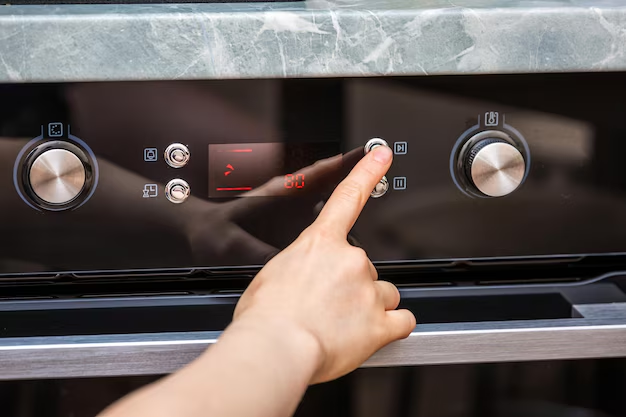Mastering Temperature Settings in Your LG Double Door Refrigerator: A Comprehensive Guide
Taming the beast that is your double door LG refrigerator can seem daunting at first. Striking the perfect balance to ensure your food is not just cold, but optimally preserved, is crucial for every kitchen aficionado. Understanding how to accurately set the temperature in your LG refrigerator ensures both energy efficiency and safe food storage. In this guide, we'll break down everything you need to know with straightforward explanations and actionable advice to keep your fridge running smoothly.
Getting Started with Temperature Settings
Your LG double-door refrigerator is a marvel of modern technology, equipped with a range of features that allow you to customize temperature settings for different sections. However, to make the most of these options, you'll need a foundational understanding of the core principles of temperature settings.
Why Temperature Matters
- Food Preservation: Correct temperatures slow bacteria growth, helping to keep your food safe and fresh.
- Energy Efficiency: Proper settings reduce energy consumption and extend the refrigerator’s lifespan.
- Optimal Performance: Ensures that all compartments are functioning perfectly without freezing food you don’t want frozen.
Ideal Temperature Settings
Common wisdom suggests that refrigerators should be set to around 37°F (3°C) and freezers to 0°F (-18°C). These settings accommodate the majority of perishable goods, from leafy greens to raw meats. Yet, understanding your specific needs and the peculiarities of your refrigerator model can lead to minor adjustments for optimum efficiency.
How to Adjust Temperature in LG Double Door Refrigerators
Before diving into the specifics of adjusting your refrigerator's settings, it's crucial to note that your model may have its own nuances. However, the general steps remain relatively consistent across most LG refrigerators.
Using the Control Panel
- Locate the Control Panel: This is typically found at the inner top section of the refrigerator or near the top center.
- Identify Settings: Look for buttons labeled "Freezer" and "Refrigerator." These allow you to set individual temperatures.
- Adjusting Temperatures:
- Refrigerator: Press the "Refrigerator" button to navigate to your desired temperature setting.
- Freezer: Utilize the "Freezer" button for the same purpose.
- Wait for Calibration: Allow several hours up to a standard day for your refrigerator to stabilize at new settings.
Smart Features and Connectivity
Modern LG refrigerators often come with smart features allowing you to control temperature settings remotely via a mobile app or smart home integration system.
- Mobile App Connectivity: Use the LG app to adjust settings and receive notifications about potential issues.
- Wi-Fi Feature: This can allow for voice control and automatic updates to optimize energy use.
Key Features of Your LG Refrigerator
LG refrigerators are known for several standout features. Leveraging these can help maintain ideal temperatures.
Multi-Air Flow Cooling
This system ensures even temperature distribution across different sections of the fridge. This feature mitigates the risks of cold spots and uneven cooling, thereby maintaining food freshness longer.
Door Cooling+
This feature is designed to provide a consistent flow of cool air from the door side to reduce temperature variation. It’s essential for ensuring that stored milk and other beverages remain at the optimal temperature.
Express Freeze and Cooling
When you have new groceries, the express features can speed up the cooling and freezing process. This ensures that foods are brought to the correct temperature quickly, reducing the risk of spoilage and improving texture for items like meats and soft fruits.
Common Mistakes and How to Avoid Them
Even with advanced technology, users often make a few common mistakes in using their double-door refrigerator. Here are some pitfalls to avoid:
Overloading the Refrigerator
- Impact: Blocks air vents, hindering the appliance's ability to maintain even temperatures.
- Solution: Ensure there is ample space for air to circulate. Avoid packing each shelf to capacity.
Incorrect Placement of Food Items
- Impact: Can result in inconsistent temperatures, causing some items to freeze while others warm.
- Solution: Store delicate items like dairy away from vents, which often blow colder air.
Frequent Door Opening
- Impact: Consistently opening the refrigerator door allows cold air to escape and warm air to enter, which disrupts the internal temperature.
- Solution: Try to plan what you'll need ahead of opening the fridge to minimize open-door time.
Ignoring Maintenance
- Impact: Although temperature settings are correctly adjusted, a poorly maintained refrigerator can't perform efficiently.
- Solution: Regularly defrost if needed, clean condenser coils, and check door seals for any gaps.
Practical Consumer Tips & Takeaways 📝
- Set It Right: Standard settings around 37°F (refrigerator) and 0°F (freezer) serve most households well.
- Stay Informed: Utilize smart features for guidance and prompt alerts if temperatures drift outside your set range.
- Mind the Gaps: Keep space between items to avoid blocking airflow.
- Routine Checks: Schedule a monthly evaluation of temperature settings and functionality.
Final Insight
Navigating the nuances of temperature settings in your LG double door refrigerator doesn't have to be a daunting task. The path to mastering your appliance lies in understanding its features and applying practical knowledge to everyday usage. With a little maintenance, thoughtful use of space, and utilization of smart features, you can ensure that your refrigerator runs efficiently, keeps your food fresher, and saves energy. Embrace these tools and strategies to create an optimal environment for your perishables, and enjoy the peace of mind that comes from a well-managed kitchen appliance.
